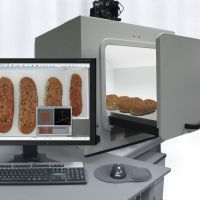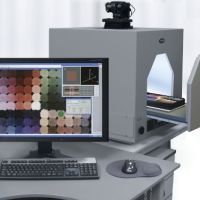DigiEye - Non contact colour measurement
VeriVide’s DigiEye system helps where colour and appearance are critical. From food and drink to automotive interiors, businesses are using colour and appearance data to their advantage in ways that they may never have previously considered. Data collected and processed by DigiEye offers a range of benefits to manufacturers, producers and processors from speeding up quality control and sustaining product integrity and reducing wastage.
The DigiEye system from VeriVide is different; digitally capturing and measuring texture, colour and appearance with an amazingly high resolution. DigiEye measures food in context with other products in the batch, with the other visual ingredients of the product and within the context of the packaging, even liquids with transparent bottles.
Data collected and processed by DigiEye enables food and drink food and drink producers and processors to:
- Speed up quality control.
- Reduce wastage.
- Sustain product integrity.
- Improve ability to meet customer standards.
- Improve supply chain efficiency.
- Improve R&D capability.
- Detect anomalies, contamination or deterioration.
- Help solve production problems.
Digieye is a digital colour imaging system used by leading companies. A characterised digital SLR camera, enabling capture of outstandlingly details images, recording colour data at millions of points.
Examples of products and materials that can be assessed quickly and accurately by DigiEye include:
- Denim
- Carpets
- Patterns and prints
- Lace and lingerie
- Co-ordinated sets - including combinations of ‘soft’ and ‘hard’ goods merchandised together.
Colour Fastness grading for both change of shade and staining of adjacent fabric has traditionally been undertaken by trained and experienced graders using a standard illumination cabinet and set of grey-scales, even with experienced graders this is the most subjective area of textile testing. The DigiEye Colour Fastness Grading option DigiGrade now provides objective and repeatable results. It is most commonly used to evaluate wash fastness results, as well as evaluating Crocking (dry and wet rubbing), change of shade and determining the endpoint and final grade of light fastness.
Others also viewed
More info? Quotation?
Any questions? Don't hesitate to contact us.





